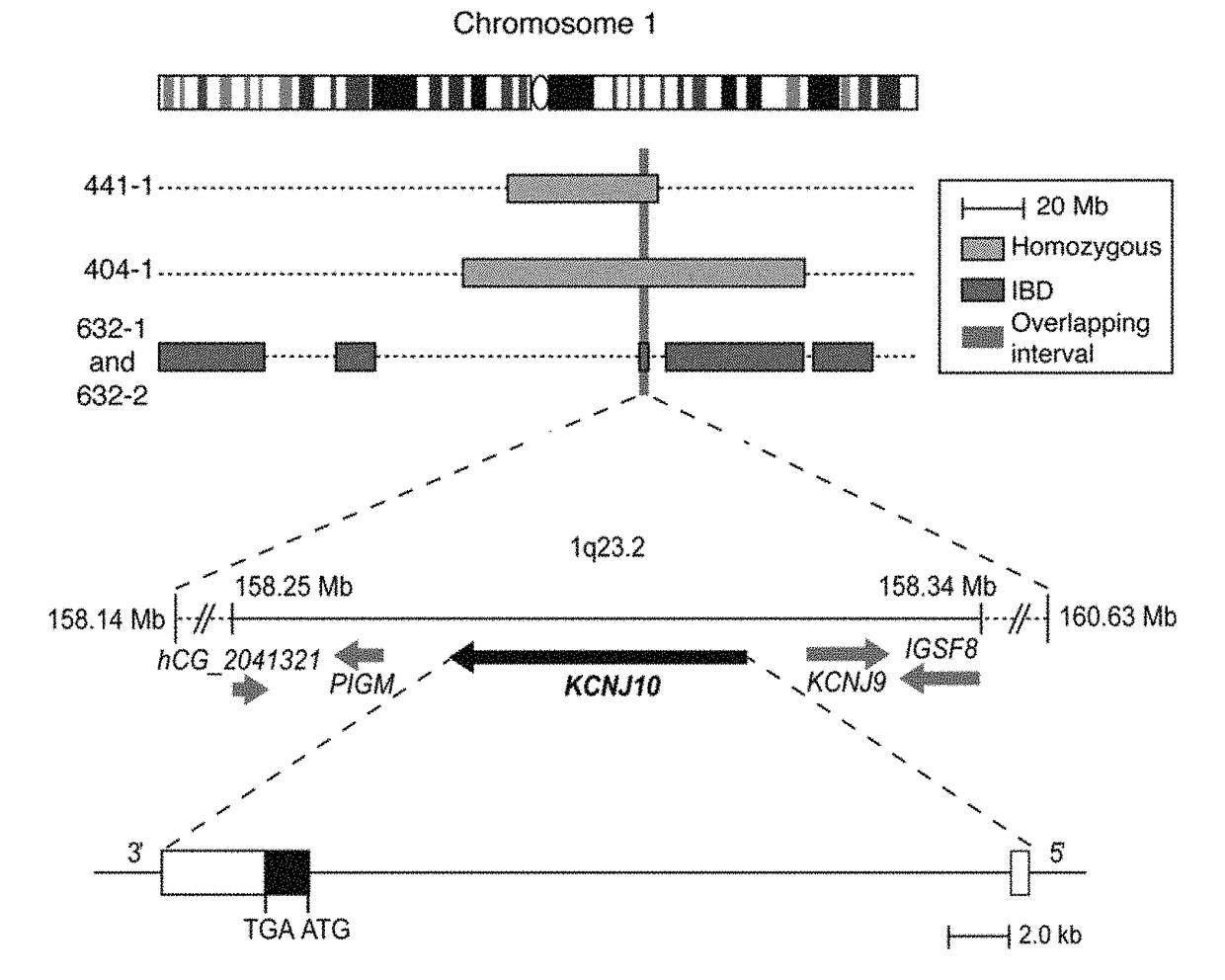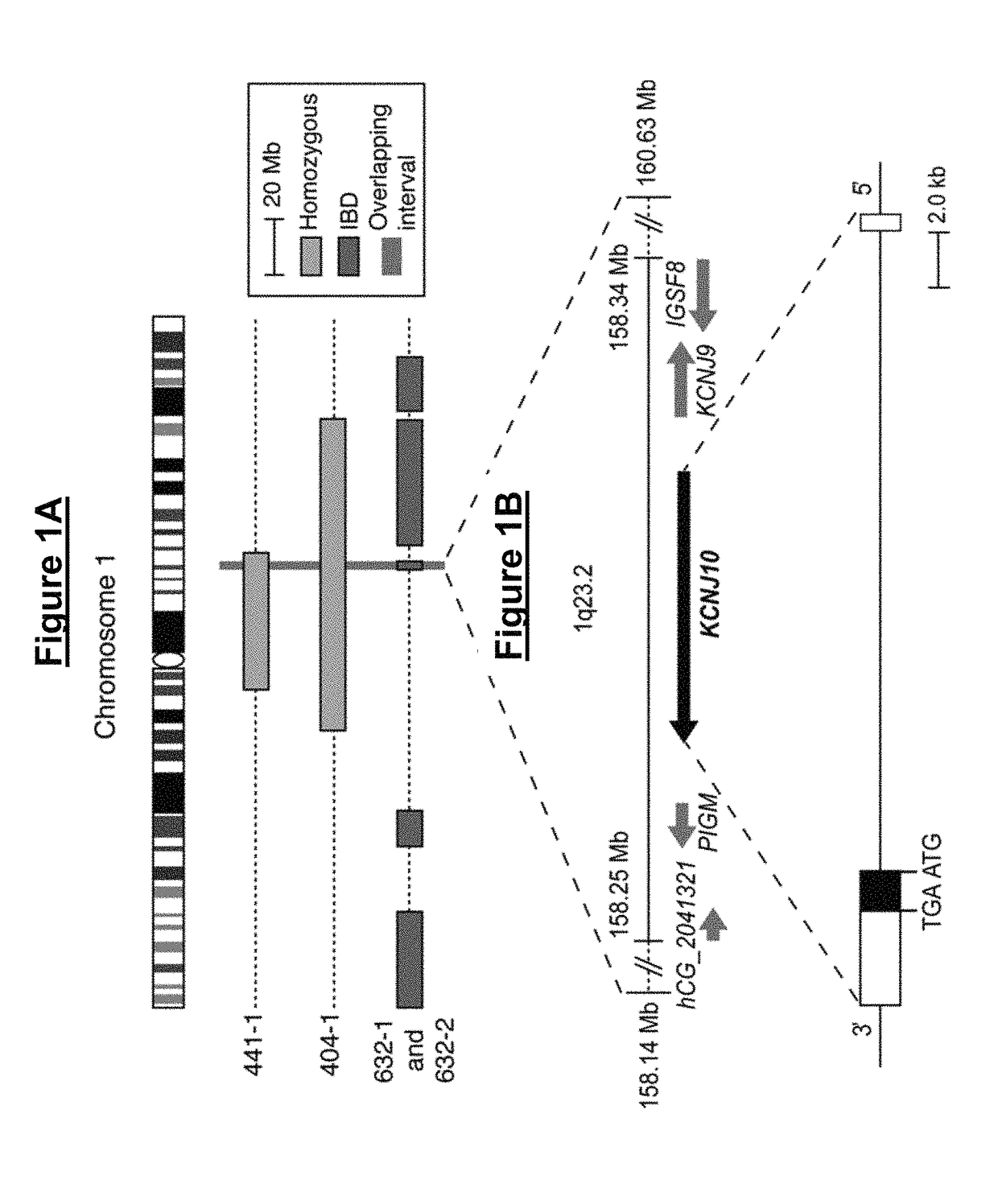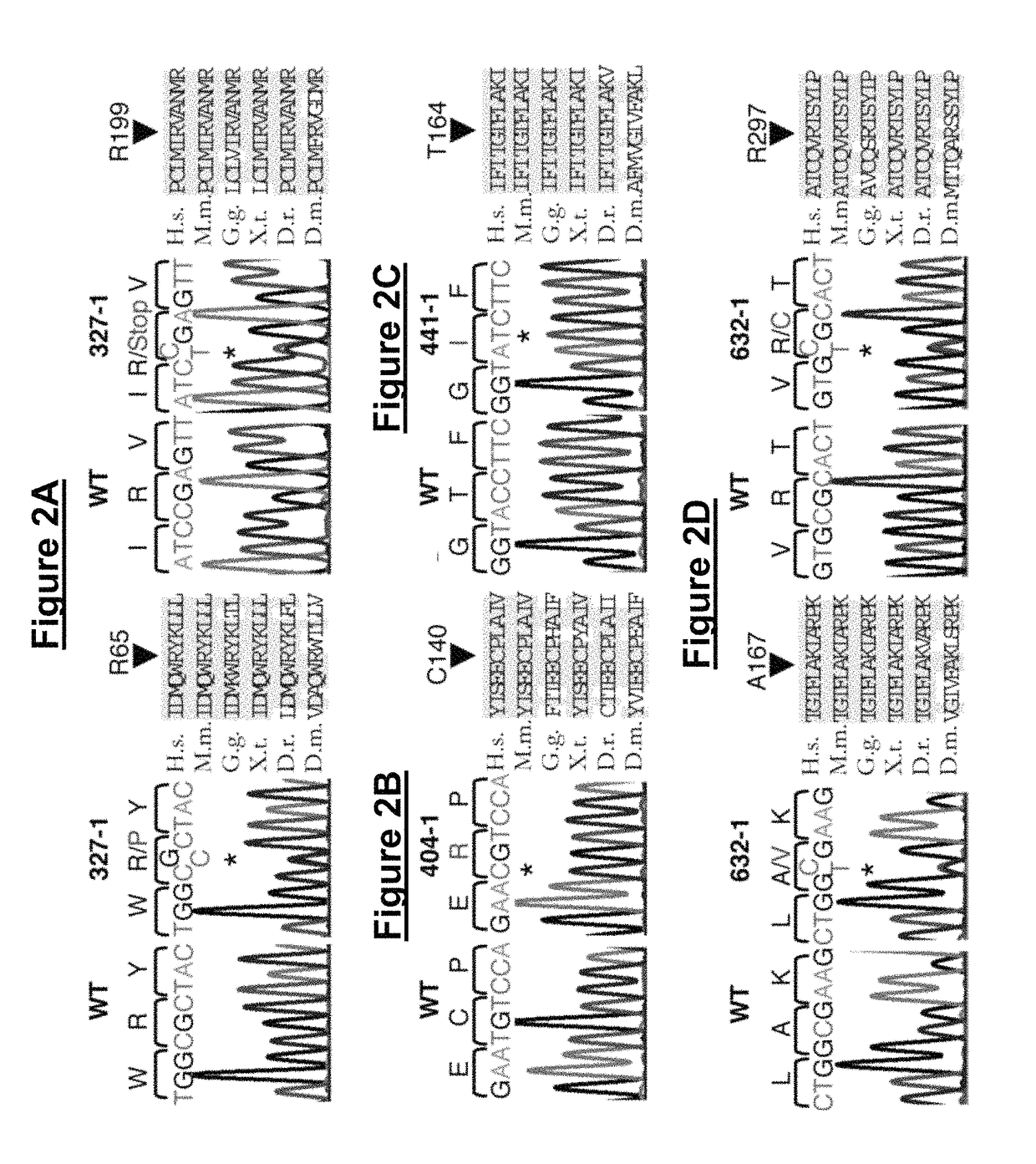Loss of function mutations in KCNJ10 cause SeSAME, a human syndrome with sensory, neurological, and renal deficits
a function mutation and human syndrome technology, applied in the field of loss of function mutations in kcnj10, can solve the problems of renal salt wasting and deafness, secondary increases in enac activity, hypokalemic alkalosis, etc., and achieve the effect of increasing the risk of offspring
- Summary
- Abstract
- Description
- Claims
- Application Information
AI Technical Summary
Benefits of technology
Problems solved by technology
Method used
Image
Examples
example 1
Case Report: Kindred 441
[0338]The index case, patient 441-1, is a 24-year-old female of Afghan ancestry who is the fifth of 6 offspring of healthy first-cousins. Generalized seizures began at 3 months, occurring several times daily. Seizures were controlled initially with phenobarbital, and later diphenylhydantoin. Sitting was first demonstrated at age 1 year, crawling at age 20 months.
[0339]At age 5 years 7 months, the patient presented for evaluation of developmental delay. At this time, she was unable to walk or speak. Physical examination was notable for atrophy of the lower extremities without contractures. Motor strength was slightly reduced in the upper, but markedly reduced in the lower extremities. Reflexes were normal. There was marked ataxia. Nerve conduction studies revealed reduced conduction velocity in the left peroneal and left tibial nerves (36 and 37 m / sec, respectively; n1 40-44 m / sec). A muscle and nerve biopsy showed normal muscle other than fiber-type dispropor...
PUM
| Property | Measurement | Unit |
|---|---|---|
| temperatures | aaaaa | aaaaa |
| temperature | aaaaa | aaaaa |
| temperature | aaaaa | aaaaa |
Abstract
Description
Claims
Application Information
 Login to View More
Login to View More - R&D
- Intellectual Property
- Life Sciences
- Materials
- Tech Scout
- Unparalleled Data Quality
- Higher Quality Content
- 60% Fewer Hallucinations
Browse by: Latest US Patents, China's latest patents, Technical Efficacy Thesaurus, Application Domain, Technology Topic, Popular Technical Reports.
© 2025 PatSnap. All rights reserved.Legal|Privacy policy|Modern Slavery Act Transparency Statement|Sitemap|About US| Contact US: help@patsnap.com



